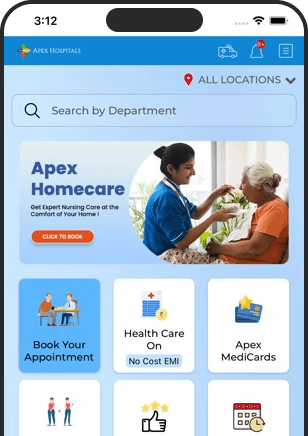
Varicose Veins
What are varicose veins?
Varicose veins are swollen, twisted blood vessels that protrude beneath the skin, often appearing blue or purple. They commonly occur in the legs, feet, and ankles and can cause discomfort, such as pain or itching. While many varicose veins are visible on the surface, deeper veins in the legs can become varicose. Although these deep varicose veins aren't visible, they can lead to leg swelling and aching, increasing the risk of blood clots. Varicose veins are common and often run in families, with women being about twice as likely as men to develop them.
What are the causes of varicose veins?
Varicose veins develop when the valves inside veins, ensuring blood flow in one direction, weaken or damage. This dysfunction allows blood to pool in the veins, leading to their enlargement and twisting. These veins commonly appear in the legs, where the challenge of fighting gravity makes it harder for blood to return to the heart. Contributing factors to varicose veins include:
- Pregnancy
- Menopause
- Aging (particularly after 50)
- Prolonged periods of standing
- Obesity
- A hereditary tendency for the condition.
What are the symptoms of varicose veins?
Varicose veins may not always be painful but can present with various visible signs. These include:
- Veins that appear dark purple, blue, or match the skin tone. The visibility of these changes can vary depending on your skin colour.
- Veins that are twisted, bulging, and resemble cords running along the legs.
If varicose veins do cause discomfort, symptoms can include:
- A heavy or aching sensation in the legs.
- Burning, throbbing, cramping, and swelling in the lower legs.
- Increased pain after prolonged periods of sitting or standing.
- Itching around the affected veins.
- Changes in skin colour near the varicose veins.
What are the complications of varicose veins?
Varicose veins can lead to several complications if left untreated. Some of the potential complications include:
1. Chronic Venous Insufficiency: The veins cannot effectively return blood to the heart, leading to persistent swelling, pain, and skin changes in the legs.
2. Ulcers: Painful sores or ulcers can develop, especially around the ankles, due to poor blood circulation and prolonged pressure in the veins.
3. Blood Clots: Blood clots may form in the deep veins of the legs, which can be dangerous if they travel to the lungs (pulmonary embolism). This is a severe condition requiring immediate medical attention.
4.. Bleeding: Varicose veins near the skin's surface can rupture and cause bleeding, which may be severe if the veins are significantly enlarged.
When to see a doctor
If you're concerned about the appearance or discomfort of your veins and self-care methods haven't provided relief, it's time to consult your healthcare professional. Book your appointment today!
FAQS
Health In A Snap, Just One App.
KNOW MORE
